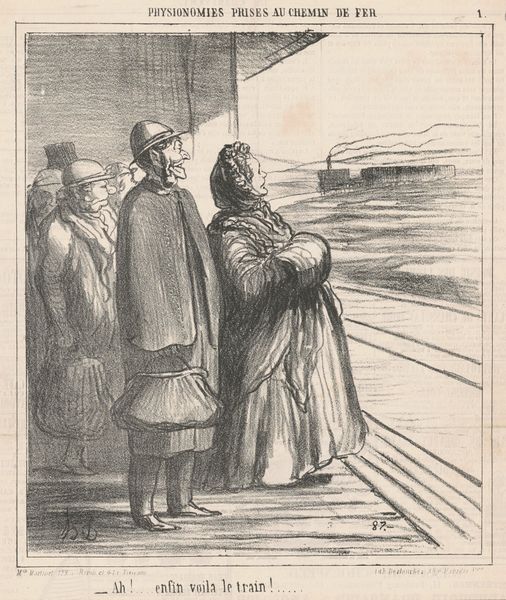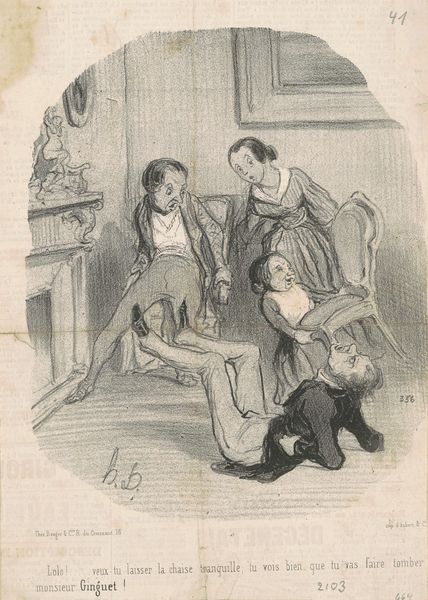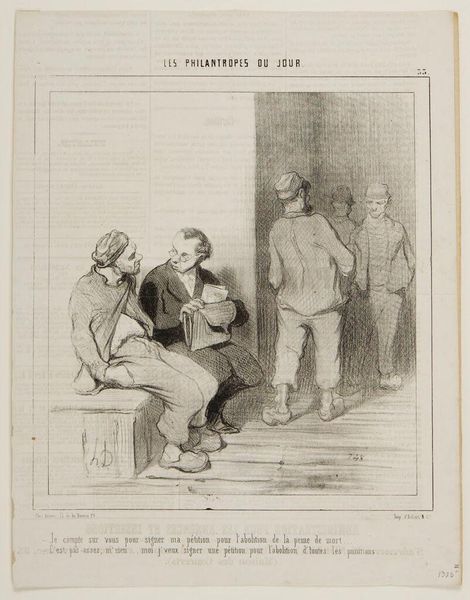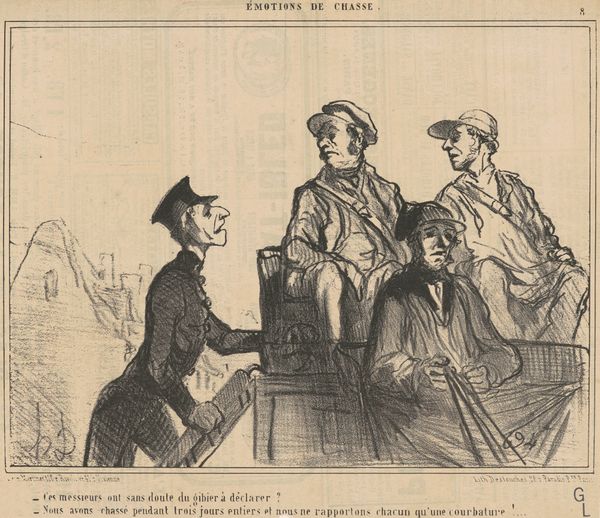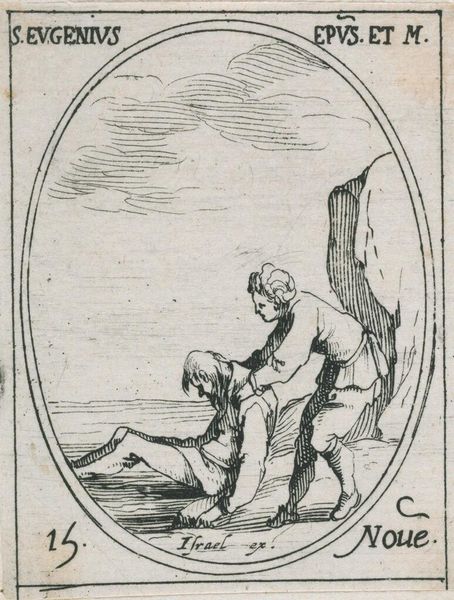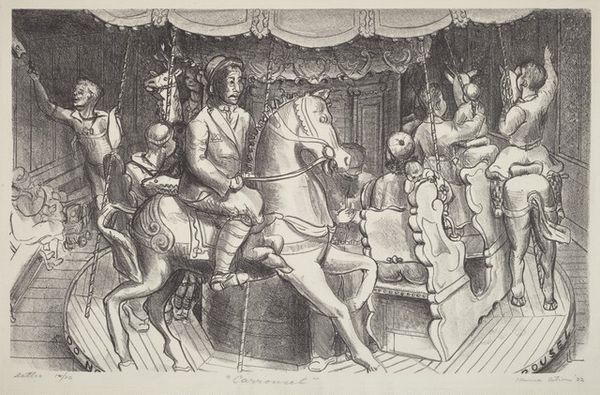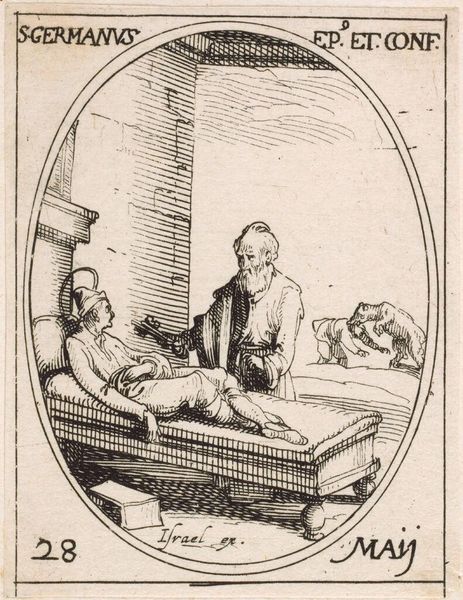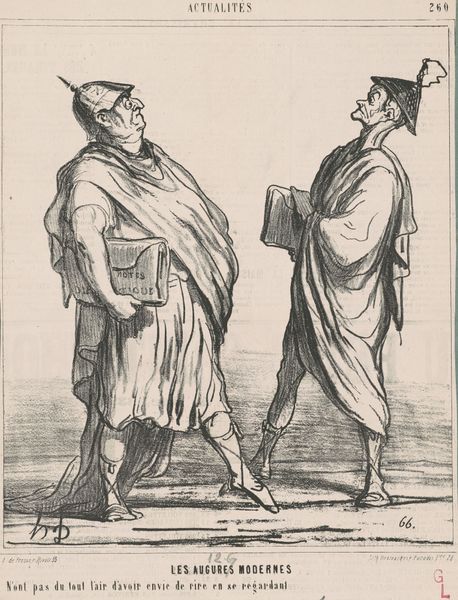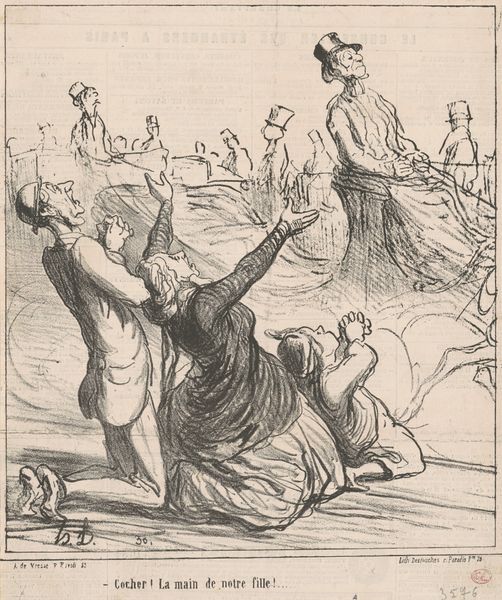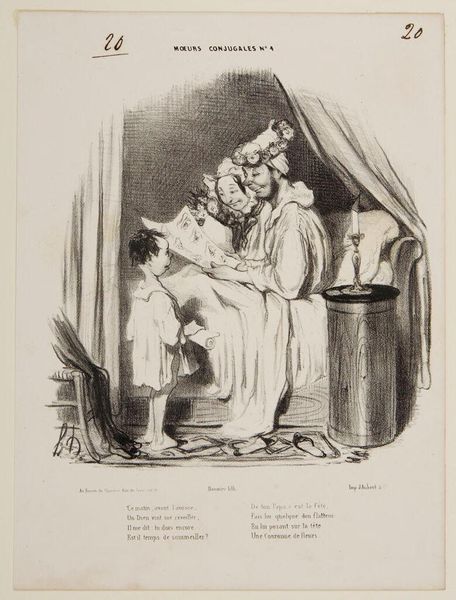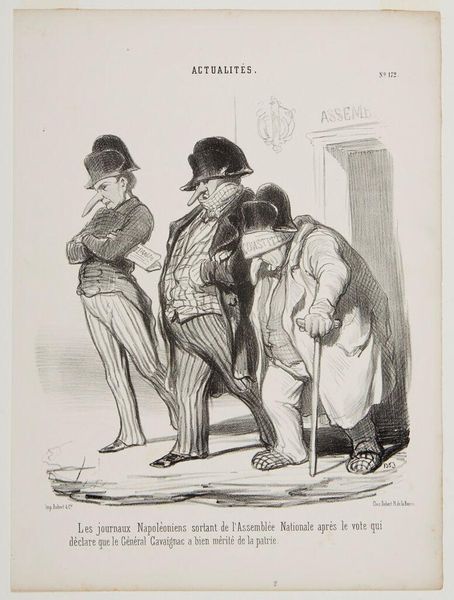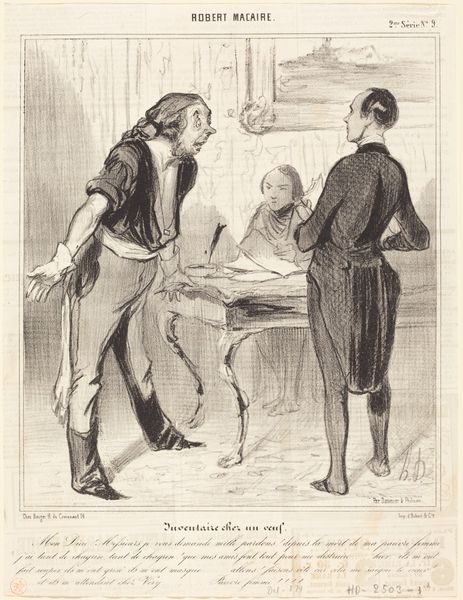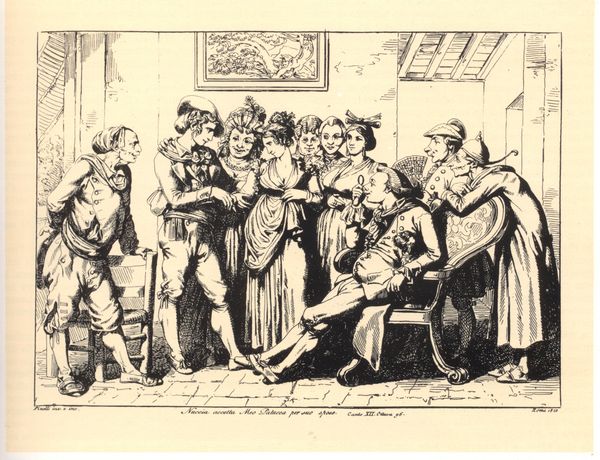
drawing, paper, ink, pen
#
portrait
#
drawing
#
neoclacissism
#
allegory
#
narrative-art
#
greek-and-roman-art
#
figuration
#
paper
#
ink
#
classicism
#
line
#
pen
#
history-painting
#
academic-art
Copyright: Public domain
Curator: This is John Flaxman's "Illustration to Odyssey," an ink and pen drawing on paper, created in 1793. Editor: It strikes me as an exercise in pure line. Very spare, almost ascetic in its presentation of classical forms and themes. Curator: Absolutely. Flaxman was a key figure in the Neoclassical movement, embracing the aesthetics of ancient Greece and Rome. He was hugely influential and particularly well-known for his outline illustrations to Homer. This piece is from that very series. Editor: And that classical restraint is heavy with meaning, isn’t it? Look at the symbolism in the figures—their poses communicate entire narratives through minimal detail. Is the seated man Odysseus? He radiates defeat, slumped and apart. Curator: Yes, that's right. This would likely be illustrating a moment from the Odyssey narrative, perhaps a moment of reflection for Odysseus after enduring one of the many trials on his long journey home. We know that Flaxman's interpretations shaped the visual culture surrounding Homer for generations. Think about the power and the legacy of that—visualizing some of our oldest and most treasured cultural material. Editor: I see echoes of Roman sculpture in the drapery, the folds suggesting form and emotion with incredible efficiency. Even the white space seems purposeful, emphasizing the figures' isolation. Curator: I think that white space reflects more about social and economic circumstances for art production and display during Flaxman's period. Flaxman worked mostly for engravers, and was trying to appeal to broader markets. This means images were meant to be reproduced in large scale. Flaxman needed images that could be accessible as reproducible images that did not need access to special printing technologies. Editor: I appreciate the restraint now as a product of technological constraints, rather than exclusively the author's intention. It gives the piece a raw, almost diagrammatic quality, laying bare the bones of the story. Curator: Well, regardless of our views of artistic intentions, what’s evident is Flaxman's enduring influence on visual storytelling. It reminds me to see how interpretations shift across time. Editor: And for me, it highlights the potent, universal language of form and symbol, resonating even across centuries.
Comments
No comments
Be the first to comment and join the conversation on the ultimate creative platform.
